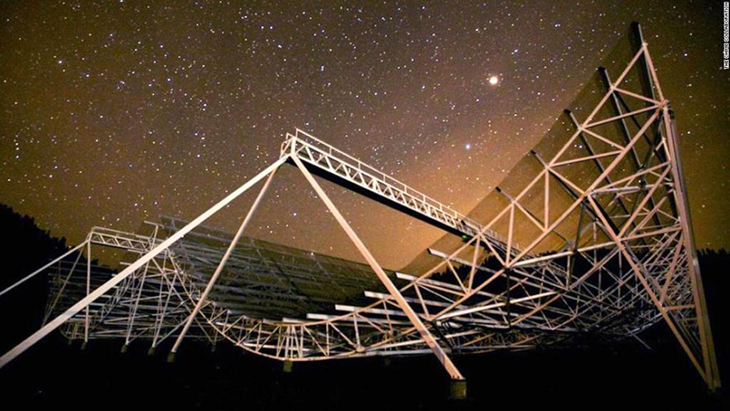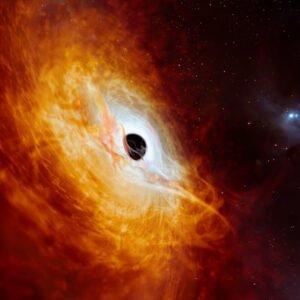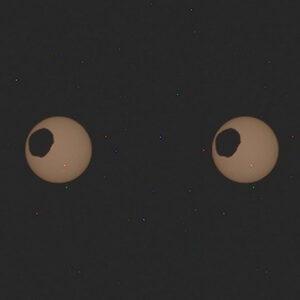
Is there life out there? This has been a debate since time immemorial. Some say that they can attest to the fact that they’ve been witnesses to UFOs and alien life forms. But to look for solid evidence, that has yet to be uncovered.
Still, the unknown is what attracts the others to continue on with the search. Now, with the advancement in technology, they’ve seen subtle glimpses that hint that there may be something out there that we may need to look into further.
Finally, some astronomers from MIT, and universities in Canada and the US, have been able to hear a strange and persistent radio signal coming from a far-off galaxy. The signals seem to be flashing with regularity, which came much as a surprise to all of them.
The signal that they heard was classified as a fast radio burst, or what is otherwise known as FRB. This means is what they heard was an intensely strong burst of radio waves that comes from an unknown astrophysical origin. The sound oftentimes last for just a few milliseconds at its longest. As for this new signal, it managed to stay on for as long as three seconds, which is around about 1,000 times longer than the usual FRB. In the 3-second window, the team was able to hear bursts of radio waves that repeated every 0.2 seconds. There was obviously a periodic pattern to it and they compared this to a heartbeat.
The source of the signal came from a far-off galaxy which was approximately several billion light-years away from Earth. Where that sound came from still remains to be unknown. The astronomers who heard it suspect that the signal could come from either a radio pulsar or a magnetar “on steroids”. These are types of neutron stars, which are very dense, rapidly spinning collapsed cores coming from the giant stars.
“There are not many things in the universe that emit strictly periodic signals,” Daniele Michilli, a postdoc in MIT’s Institute for Astrophysics and Space Research, said. “Examples that we know of in our own galaxy are radio pulsars and magnetars, which rotate and produce a beamed emission similar to a lighthouse. And we think this new signal could be a magnetar or pulsar on steroids,” she added.
The team has hopes and they want to detect more periodic signals that came from the same source. Once they regain access to it, this could be utilized as an astrophysical clock. This could mean that the bursts’ frequency, and how these change as wherever it came from moves away from Earth, could be used to measure the rate of the universe is growing or expanding.
The recent discovery was recently reported in the journal Nature. The authors for this are the members of the CHIME/FRB Collaboration, the MIT co-authors Calvin Leung, Juan Mena-Parra, Kaitlyn Shin, and Kiyoshi Masui. Michilli was part of the group as well and he led the discovery first as a researcher at McGill University, and then he had a postdoc which he took at MIT.
As for now, the signal was called FRB 20191221A by the researchers. At this point, this is considered to be the longest-lasting FRB detected to this very day that came with the clearest periodic pattern.
The Sound of a Heartbeat
The first ever FRB was discovered in 2007. Since then, there have been hundreds of similar radio flashes that came from different areas across the galaxy, the most recent of which came from the Canadian Hydrogen Intensity Mapping Experiment, or CHIME. This is an interferometric radio telescope made up of 4 large parabolic reflectors that are found at the Dominion Radio Astrophysical Observatory in British Columbia, Canada.
CHIME still observes the sky as the Earth rotates to this day. It has been specially designed to pick up radio waves that come from hydrogen in its in earliest form in the universe. The telescope is also extremely sensitive to quick radio bursts. It has done so since it directed its watchful eye to the sky in 2018. Since then, CHIME has been able to detect hundreds of FRBs that come from different parts up there.
A large portion of FRBs observed detected are considered one-offs, which are ultrabright bursts of radio waves that last for a few milliseconds as it then blinks off afterwards. Now, the researchers came upon the first periodic FRB that seemed to send out radio waves in regular patterns. This signal consisted is made up of a four-day window of sporadic bursts. This had continuously repeated every 16 days. This specific cycle meant that there was a presence of a periodic pattern of activity. It must be noted, however, that the signal that came from the actual radio bursts was random instead of it being periodic.
Two years ago, on December 21, 2019, CHIME caught a signal of what could be a potential FRB. This caught the attention of Michilli, since she was the one who was scanning for the incoming data. “It was unusual,” he shared. “Not only was it very long, lasting about three seconds, but there were periodic peaks that were remarkably precise, emitting every fraction of a second — boom, boom, boom — like a heartbeat. This is the first time the signal itself is periodic.”
Clear Sound Bursts
When Michilli and his colleagues were analyzing the pattern of radio bursts that came from FRB 20191221A’s, they found similarities with emissions from radio pulsars and magnetars that came from our very own galaxy. Radio pulsars are actually neutron stars that bring forth beams of radio waves that appear to beat like a heart as the star rotates. Magnetars also emit similar emissions because of their extreme magnetic fields.
However, there are also differences between the new signal and radio emissions from our own pulsars and magnetars. What makes this stand out is that FRB 20191221A seems to be more than a million times brighter. Michilli said that the luminous flashes may come from a distant radio pulsar or magnetar that is usually not as bright as it circles. But for reasons they have yet to discover, this one ejected a series of brilliant bursts in a once-in-a-lifetime three-second window. Luckily, CHIME was there to capture the moment.
“CHIME has now detected many FRBs with different properties,” Michilli said. “We’ve seen some that live inside clouds that are very turbulent, while others look like they’re in clean environments. From the properties of this new signal, we can say that around this source, there’s a cloud of plasma that must be extremely turbulent.”
The group continues to hope that they can still catch more bursts from the periodic FRB 20191221A. This will help them understanding the source more and generally learn more about neutron stars.
“This detection raises the question of what could cause this extreme signal that we’ve never seen before, and how can we use this signal to study the universe,” stated Michilli.
What are your thoughts? Please comment below and share this news!
True Activist / Report a typo


